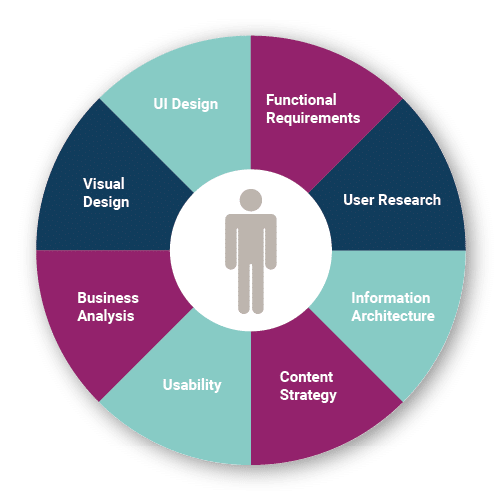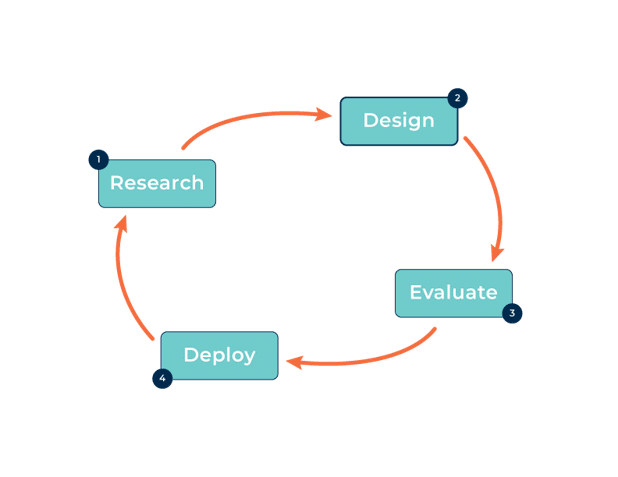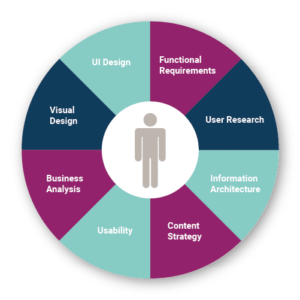Technology is all around us – and it’s changing fast. We ask our smart speakers for the weather report. We watch TV shows on our tablets. We reach for our smartphones first, instead of going to our computer, to look up just about anything online.
We rely on technology to perform most things, from simple everyday personal tasks to more substantial projects in our workplace. Because of this, we need our technology to be quick, responsive, and useful. The same applies to the technology we use for work, such as employee rewards programs. We want our employee rewards program participants remaining motivated, engaged, and rewarded – not frustrated with the technology. This is where a user-centered approach comes in.
What is user-centered design?
According to the Interaction Design Foundation, this approach is an “iterative design process in which designers focus on the users and their needs in each phase of the design process.” We can simplify it even more. The job of user-centered design is to develop something so you don’t hate using it.
You may have experienced examples of a bad layout and not even realized it. Have you viewed a website only to have annoying pop-up windows hinder your viewing experience? Have you struggled to open a door then grow even more frustrated after reading that you should be “pushing” instead of “pulling?” These are all examples of poor design, and they usually happen when requirements lead.
Putting the user’s needs first
For this approach to be successful, you must place the person’s needs at the center of the design process. Though it sounds obvious, it’s easy to make assumptions about users. We think we know how they want to navigate a webpage or how they want to use their phones to gather information. But, when we unconsciously project ourselves into our participants, we run into problems. We must create around users, not us. This requires involving real people throughout the process.

Getting started
User-centered design is a structured, ongoing process in which real data is involved every step of the way. A big reason why this type of approach works well for employee rewards programs. Here are the steps:
- Research – Do you know what your users are seeking? Gathering data is key. Start by surveying or interviewing your participants to understand their needs fully. Then, use this data to create personas. Personas are fictitious characters constructed from real findings that help us generalize what’s most important to this unique group. It’s different from market research. The goal of creating personas is to form empathy and understanding of individuals. When we understand the various concepts that are important to users, we also can better understand the business perspective and design around those needs and roles.
- Design – With your personas in mind, begin the process. This step can take as long as it needs to take. Of course, some technologies are more complicated than others during this stage.
- Evaluate – Remember the scientific method where you develop a hypothesis based on observational data, then test that hypothesis to see if it holds up? The same applies to user-centered design. But don’t wait until this stage is complete to test your hypothesis. Put your preliminary projects – whether they are paper prototypes or other low-fidelity designs – in front of participants so you can evaluate whether or not you’re meeting their needs identified in your research. Instead of focusing on how much the system could do for users, observe what people are doing with the system. That way, you can adjust and refine your technology based on the common activities you observe during your real-life tests. We do this constantly and consistently with the employee rewards programs that we manage. We are data hounds. But, only because we use data to design better and smarter technology. Remember: data for data’s sake is worthless. You need to evaluate and apply.
- Deploy – The process doesn’t end once the deployment is complete. User-centered design is a cyclical process, and a good participant experience is a moving target. To be effective, you must continue evaluating and discovering if your model still meets the needs of those who are using the system.

Putting user-centered design into your incentive and recognition program
Successful incentive and recognition programs are built around ensuring participants receive the right information at the right time. Designing for a variety of roles and devices is essential to making sure participants stay informed in any situation. With the penetration of smartphones, chances are your users are engaging with digital products more frequently. Especially when on-the-go and using a mobile device, participants don’t necessarily want the same information on their phones that they can get on their desktop. This may result in a cluttered and user-unfriendly experience. That’s why developing a mobile version of a website is very different from simply applying the same version to a smaller screen. For more on this, read our blog post “Mobile-First Design Should Top Your List of Technology Requirements.”
The good news is, there are tools available to ensure your incentive and recognition program is streamlined, user-friendly, and successful. Our PerformX platform is built around user-centered design principles to make it desired for a variety of role-based segments by:
- Consolidating disparate data, programs, budgets, and reporting on an easy-to-use portal.
- Providing everything you need to set up and operate incentive, recognition, or channel programs by helping inform, engage, reward, and evaluate your team.
- Using a mobile-first approach so the material is easy to access.
One of the ways we can create successful employee rewards programs is to ensure our programs are user-friendly. Don’t frustrate your participants with bad design. Applying these principles means you are using research and design techniques to ensure your incentive and recognition program technology creates the best experience for the people who are using it. A refined focus on simplicity is key to accelerating your employee rewards program and cultivating high-performing teams.
Sean Bradley
Sean Bradley is the Vice President of Product and leads the product management, user experience, and engineering organizations at One10. With over 15 years of experience in startups to Fortune 100 product organizations, Sean helps the world’s largest companies achieve their desired goals through a data driven approach. Everyday Sean’s teams are working to understand and solve unique problems in the sales and employee performance industry through our innovative product platform. Contact Sean today to talk more about how our solutions can solve your employee incentive and recognition goals with One10!
 Sean Bradley
Sean Bradley



